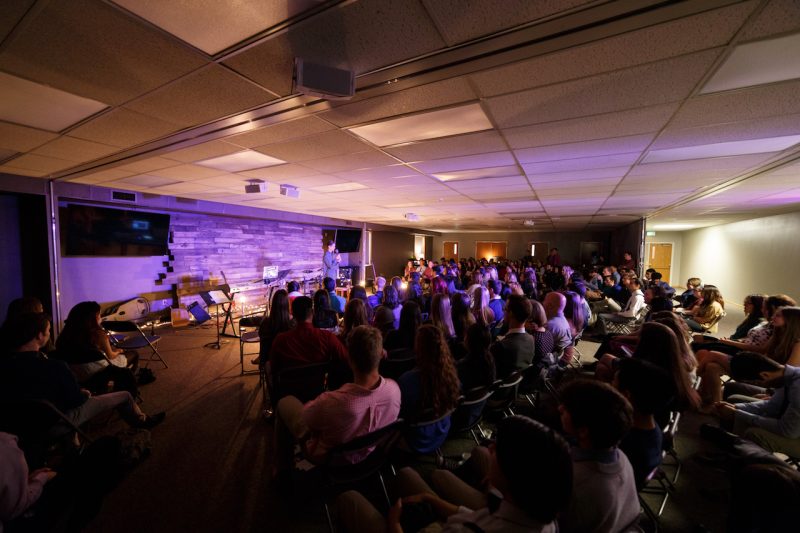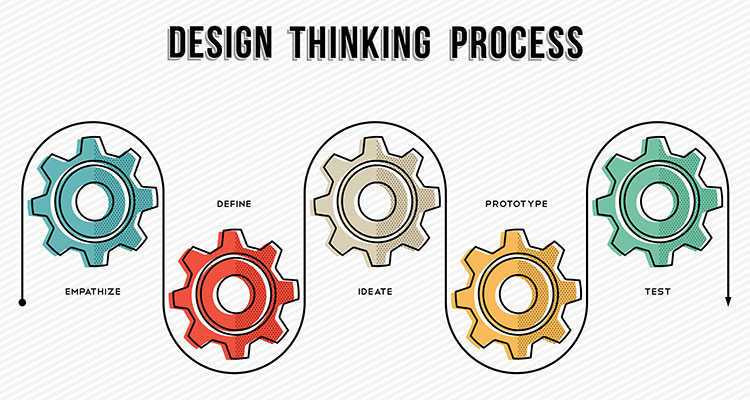Mission-Critical Upgrades
 Panic. When a major equipment failure happens at a church during a service, it’s a natural reaction for both the operator and pastors to feel a sense of panic. As with any venue during a live event, major technical failures are a worst-case scenario. And like other venues, churches feel the pain just as acutely but have less than a week to either completely solve the problem or come up with a viable temporary solution.
Panic. When a major equipment failure happens at a church during a service, it’s a natural reaction for both the operator and pastors to feel a sense of panic. As with any venue during a live event, major technical failures are a worst-case scenario. And like other venues, churches feel the pain just as acutely but have less than a week to either completely solve the problem or come up with a viable temporary solution.
“Sundays come every seven days” is the mantra of churches, where weekend services are the culmination of efforts to invite friends and neighbors and provide a compelling experience for attendees. So when equipment failure happens, it’s an all-hands-on-deck effort to identify the issue and come up with solutions — fast!
Cater to failure?
Though catastrophic failures are infrequent in churches, there are plenty of weekends where significant failures cause more than a hiccup during the service. Every time a failure happens, the tech team feels the sting and the leadership may begin to lose trust in the tech team. Every weekend is mission-critical for churches, so when a major malfunction happens, the ability to respond immediately can easily set a manufacturer or integration firm apart from the competition.
Dealing with the immediate issue can often be remedied with a rental unit or, in some cases, a demo of an ideal replacement unit to help the church out in a time of crisis. The key is to have a program or system in place that churches can utilize in these critical moments. Some manufacturers have a loaner program to send a similar product for the church to use while their original equipment failure is repaired or replaced. This is a good idea for churches that have their equipment installed the first time, but the vast majority of situations will be where a competitor’s equipment has failed. This is a one-two punch opportunity: Provide a free unit for the church to use for a week or two and show them what they’re missing by not having newer, upgraded technology.
I can almost hear the unified cry of many manufacturers: “That’s what our dealer/distributor/integrators are there to do.” I almost agree. Sure, the boots-on-the-ground support from local firms is always helpful, but I submit that manufacturers need to be just as accessible. In today’s hyper-competitive market (in a down economy, no less), it’s not a large burden for a manufacturer to provide this kind of service when purchasing loyalty is on the line.
Though it may sound like catering to failure, it’s really a significant opportunity to be known among church leaders as the brand that pulled them from the fire and helped them upgrade.
Quick fix or complete solution?
As much as a program like the one described is needed, the next logical step is to both help in their time of need and to offer a complete solution to the problem. Rarely will one piece of equipment truly solve the entire issue that the church is experiencing. Usually, there’s an open door to have an honest discussion about not only the cause of the failure, but the long-term possibility of other issues cropping up.
This is where more than a few have in the A/V/L industry has failed the church market. Instead of looking for a win/win/win scenario (manufacturer/integrator/church), the sales vultures have had a tendency to swoop in during one of these major failures and sell the church what they have in stock or are EOL’ing (End-Of-Life) in order to make a quick buck. Churches, having experienced this before, are wanting to either A) get the cheap fix because they have been burned before; or B) interested in building a relationship with a trusted manufacturer that will meet their urgent and long-term needs.
Almost 20 years ago, I worked with a manufacturer that focused on the church market with a dedicated sales team and marketing program. The idea was great, but where they missed the real opportunity was not in creating a sales program for upgrading to their latest-and-greatest, but in understanding how to share their message in a way that didn’t sound like a somewhat cheesy sales tactic (using ‘church terms’ in their marketing and sales pitches). Sure, every manufacturer has the “angle” of needing to sell equipment, but what churches don’t usually want is to be catered to in a way that looks opportunistic. How a program like the one I’m describing is set up, marketed and organized has more to do with the success of the program than the technology being offered.
Extend the Conversation
In every issue of rAVe HOW [House of Worship], I’ve said that building trust relationships with church leaders is the key to consistent, long-term success. When a church has a major technical failure, it is a golden opportunity to capture not only their information, but to define their pain points. Why is this important? Because when a manufacturer can identify the pain point, they can offer the pain remedy. And, chances are, it’s not just another rack-mounted hardware fix, but a total system solution via their own program and their trusted integrators.
Think this one through: Church has a major failure. They Google the issue and see a sponsored ad from a manufacturer offering 24-hour turnaround replacement gear and an equally fast response from one of their partners. The church fills out a short Web form with their contact information and a brief description of the problem. Based on their zip code submitted, the manufacturer’s database sends this information as an urgent service lead to a local integrator and also has one of the manufacturer’s regional reps call and find out about the situation.
This mostly automated process provides a quality lead, has the manufacturer in direct contact with the prospect and brings the integrator into the loop, too. Win/win/win.
As soon as you get past the point of equipment failure, it’s all relational from here on out. This high-impact, high-touch solution both solves the immediate problem of the church and begins building a trust relationship. Sure, there are logistics to solve, costs to be calculated and man-hours to be spent; that’s part of the ROI calculation for landing a sale of a new client and simultaneously removing a competing manufacturer.
There are a myriad of variants to this concept, but in the house of worship market, the key will be two-fold: solving the Sunday-comes-every-seven-days critical issue and building a relationship for a complete solution. Serving the church market requires a change in thinking. And change, at least at first, is always hard and bad; having the vision to see past the pain point and into a profitable future is what leading an organization is all about.
A former staff member at three mega churches and church technology consultant, Anthony Coppedge has developed a respected reputation as a leader in technical and communications circles within the church marketplace. Reach him atanthony@anthonycoppedge.com or on Twitter athttp://www.twitter.com/anthonycoppedge





